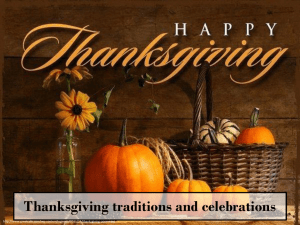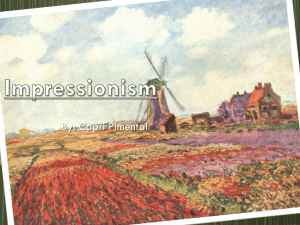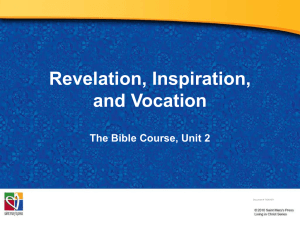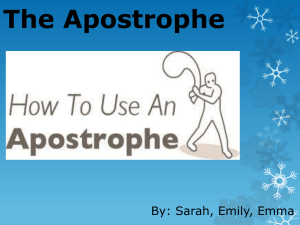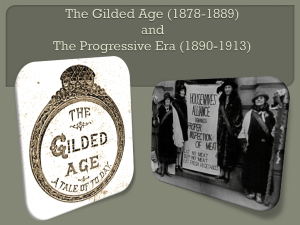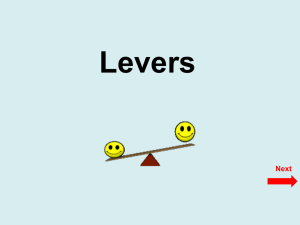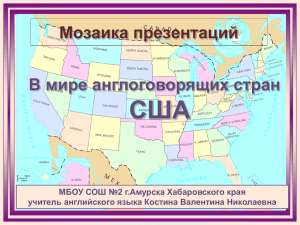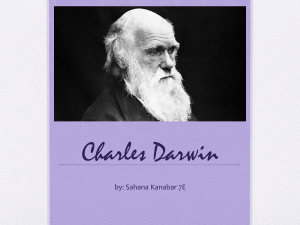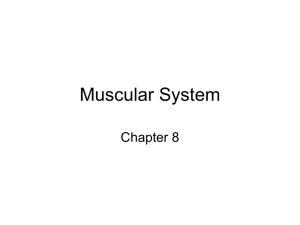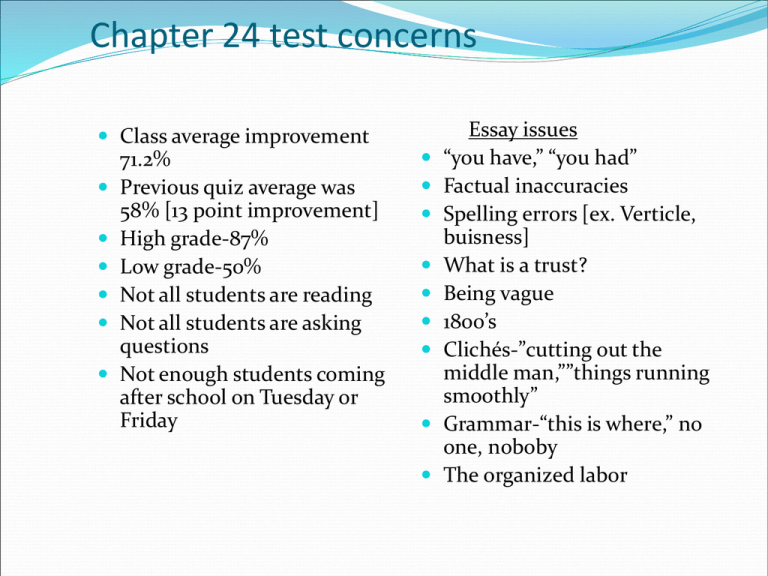
Chapter 24 test concerns
Class average improvement
71.2%
Previous quiz average was
58% [13 point improvement]
High grade-87%
Low grade-50%
Not all students are reading
Not all students are asking
questions
Not enough students coming
after school on Tuesday or
Friday
Essay issues
“you have,” “you had”
Factual inaccuracies
Spelling errors [ex. Verticle,
buisness]
What is a trust?
Being vague
1800’s
Clichés-”cutting out the
middle man,””things running
smoothly”
Grammar-“this is where,” no
one, noboby
The organized labor
Read p. 558-570 [quietly/independently]
There should no talking whatsoever!
Create notes, questions, comments
on a sheet of paper to bring to
discuss in class Wednesday/Thursday
Look specifically at terms you must
master and problematic vocabulary
words
Do not wait or procrastinate with the
readings for this chapter
I expect every student to have at least
one question at the opening of
Wednesday’s class period
What you should be looking for
[1] What did it look like it cities such as
New York, Chicago and
Philadelphia? What was there?
[2] What were issues/problems related
to Dumbbell tenements?
[3] What were issues/problems related
to transitions in immigration
during the 1880s?
[4] Explain at least 3 significant aspects
related to Italian immigrants?
[5] Explain at least 3 significant
aspects related to European-Jewish
immigrants?
[6] How did Jane Addams, Lillian Wald
and Christian Socialists ease the
transition of newly arrived
immigrants in U.S. cities?
5 minutes for open questions
Each student should have at least one question
prepared to ask for any clarification
Clear your desks except for a pen!
Discussion groups [peer ratings]
Chapter 25
America moves to the city
Modernization of U.S. Cities
Populations of major U.S. cities such as New York City, Chicago and
Philadelphia doubled from about 40 million in 1870 to about 80 million by
1900. Big cities were often crowded [densely populated]
Streets would be filled with vendors and domestic animals [chickens, horses,
pigs] causing filthy and unsanitary conditions. High crime was rampant
Urbanization of the United States concentrated large populations of people
into cities.
New immigrants such as Western Europeans [Italians and Jews] were drawn by
the lure of industrial type jobs in factories.
Accommodating the influx of immigration
Cramped living conditions and poor sanitation facilities were common.
Dumbbell tenements were designed to maximize space by using vertical design
[multiple floors] with long, narrow construction.
Communal bathrooms increased chance of disease transfer and lack of privacy
Early tenements had poor ventilation [causing respiratory ailments] and poor
natural lighting due to lack of windows throughout [one room had window]
Prior to introduction of fire escapes deaths due to fire traps were common.
Living conditions and Standard of Living
Despite poor living conditions in cities the standard of living was far
superior to the Old World in Europe for peasants [poorest, least
educated]
Public telephone service in homes was relatively affordable
Indoor plumbing [running water and sewer connected toilets] and its
convenience had supplanted out houses so typical in rural areas.
Transportation
Electric trolleys were used to transport people through city streets on top of
metal tracks similar to those used by railroads.
Mass transit lines were expanded in major cities such as Chicago and New
York [powered by overhead electric power lines]
Electric trolleys were eventually replaced by underground subways at the
turn of the 20th century
Public transportation allowed easy and cheap transportation to work for
poor citizens
Immigrant Labor and Work
Many of the new immigrants from Western and Eastern Europe were from the
peasant classes [uneducated, unskilled] and encountered discrimination and a
language barrier.
Immigrant children often assimilated quickly but spoke broken English
Public school helped with adjustment
Laborers often did piece work for local businesses by manufacturing textiles
by hand doing sewing [most often women and their children]. Each item or
piece was paid a price.
Women also worked outside the home in sweatshops in unsafe conditions for
very long hours for low wages
Italian and Jewish immigrants
Italian and Jewish immigrants came in droves to the U.S. in the 1870s to
1880s without money or formal education. Jews faced persecution
[discrimination]
Worked manual labor intensive factory jobs and sometimes selfemployed shop keepers when they could save enough money
Ability to learn English helped advancement
Formed immigrant groups [Padrone] to help each other and new
arrivals
Hull House
Center in New York that was created to help new immigrants,
especially women, transition to the New World.
Help new comers cope with big city life and learn English
Provided cultural activities such as block parties, rent parties and street
festivals
Women such as Jane Addams and Lillian Wald provided health care
and job training for women. They advocated against child labor and
sweat shops
Mail Order Catalogs
Department stores such as Montgomery Ward [1872] and Sears-
Roebuck [1886] began mail-order businesses.
Rural general stores were replaced for most household goods.
The goods were generally very inexpensive and disposal
The waste produced by packaging created challenges for cities for
garbage removal management
5 minutes for open questions
Each student should have at least one question
prepared to ask for any clarification
Clear your desks except for a pen!
Discussion groups [peer ratings]
What you should be looking for
[1] What were the concerns of the nativists and how did they manifest
themselves?
[2] What was the role of the churches in confronting the many urban
challenges? What about other non-church organizations’ roles?
[3]How did Charles Darwin’s teachings affect American society?
[4]What effect did men such as Booker T. Washington and W.E.B. DuBois
have on blacks and American society in general?
[5]What was the effect of Congressional legislation passed regarding
higher education?
[6] Why was the press such a formidable force in the U.S. [1860s to 1900]?
Conflicts between the original and the new immigrants
Nativism arose in response to the waves of new immigrants from non-English
speaking countries from Eastern and Western Europe.
Nativism was the cultural defense created by Americans with Anglo-Saxon
ancestry who were not only white but spoke English and were usually
Protestant Christian peoples.
The new immigrants were only darker skinned in many cases but they spoke
languages other than English and were Catholic and Jewish
Protestants, Jews, Catholics, the Salvation Army and YMCA/YWCA
Many of the older, gaudy Protestant churches in populated cities saw dramatic
decreases in membership as the older Americans aged [Episcopal and Baptist
churches among them].
The Protestant ministries disagreed with many of the old line Catholic beliefs
[such as original sin and literalism].
Jewish and Catholic houses of worship exploded in membership with the arrival of
the new groups.
The Salvation Army provided assistance to the poorest by providing free meals
[often holiday deliveries of turkeys and hot soup]
YMCAs and YWCAs were founded in most major and minor cities by focusing on
exercise-leisure and education activities [sports and gymnasiums].
Later the Ys provided very low cost lodging for poor/indigent people.
The Impact of Darwin on religious thought
The concepts of natural selection and
survival of the fittest brought into
questioned much of the Bible’s teachings.
Nature’s whim and not God’s will might be
responsible for who/who survived and what did
not.
Many religious and leaders and parishioners at
least considered more carefully the role of
science in what occurred.
Others considered to be religious
fundamentalists stayed faithful to the
“infallible Word of God.”
Nonetheless an alternative way of thinking
became available thanks to Darwin.
Differences of opinion on education
With greater opportunity two different kinds of black leaders emerged.
Booker T. Washington urged blacks to attain tangible, practical
skills/trades such as carpentry, masonry and plumbing.
Washington administrated the Tuskegee Institute in Alabama which
trained blacks in basic skills and industrial skills. The goals was to be
self-sufficient and “useful.”
DuBois, a Harvard PhD, believed formal, classical college schooling
was preferable. He called Washington an Uncle Tom because blacks
would be “limited” and second to whites intellectually.
W.E.B. DuBois
Booker T. Washington
Expansion of Higher Education to the public
Passage of federal legislation such as the Hatch Act and Morrill Act
expanded access to higher education.
Land and financial grants were dispensed to start public state
colleges/universities.
Prior to these schools higher education was private and costly limiting
enrolling and hording knowledge among the elite.
5 minutes for open questions
Each student should have at least one question
prepared to ask for any clarification
Clear your desks except for a pen!
Discussion groups [peer ratings]
What you should be looking for
[6] Why was the press such a formidable force in the U.S.
[1860s to 1900]?
[7] How did the pragmatists influence American
government and thought?
[8] What was the role and effect of literary figures
during the late 1800s?
[9] What impact did women have on American laws and
morality during the late 1800s?
[10] What was the significance of leisure and
entertainment in the U.S. during the same period?
Muckraking and Yellow Journalism in the Press
Both new immigrants and long standing Americans had a “hunger for words.”
Inexpensive newspapers [the Penny Press] proliferated in every major city
Joseph Pulitzer and William Randolph Hearst competed for readers and
lucrative advertising dollars by publishing sensational and scandalous stories.
Crime, corruption, sex and scandal attractive readers to the daily newspapers.
The money and influence gained by these men struck fear in the heart of their
enemies and the government.
Pulitzer
Hearst
The Pragmatists in the Darwin Age
Pragmatism is the belief absolute truths
rooted solely in religious or idealist
teachings in not valid.
To find truth one must discover it
through scientific testing,
argumentation, experimentation and
rebuttal.
Two of the most well known American
pragmatists were John Dewey and Oliver
Wendell Holmes.
Dewey created the Laboratory School in
Chicago [experimental H.S.] focused on
learning by doing.
Holmes was a U.S. Supreme Court Justice
who issues opinions [often dissenting]
rooted in the effect or application of the
law instead of heavily relying on
precedent [previous decisions].
Influential American Writers and Commentators
Horatio Alger described the wonderment of American opportunity for youths
via industriousness [rags to riches]
Walt Whitman’s poetry expressed descriptive imagery and sentimentality
related to important tragedies of the day [assassination of Lincoln.
Mark Twain in a witty, sarcastic and satirical style criticized many of the social
ills such as racism and economic disparities.
Emily Dickinson was a poet who wrote hundreds of lyrical poems on random
scraps of paper only to be discovered after her death. She was significant because
of her gender and the first prominent female poet.
Influential American Writers and Commentators
Jack London wrote several stories describing rugged American adventurism in
places such as Alaska [White Fang, The Call of Wild].
Stephen Crane wrote several short stories often casting moral judgments
regarding the protagonists.
Harriet Beecher Stowe wrote the classic tale Uncle Tom’s Cabin that had a
profound impact on the abolition movement.
Ida B. Wells was an African-American print journalist who wrote a series of
scathing articles about lynchings in N.C. and other Southern states.
American Law, Morality and Conscience
In 1873 a series of federal laws were
passed aimed at controlling vice.
The U.S. Post Office was prohibited
from allowing any item considered
"obscene, lewd, or lascivious" to be
mailed.
Later the list of banned items
extended to contraceptives.
The law was aimed at sexual repression
and dictating public morality.
Many American women were tired of witnessing the devastation that alcohol
wrought on families.
Rural men were especially prone to alcoholism because of isolation and depression.
Domestic violence was also a problem.
Christian religious women were the most active in trying have alcohol banned.
Eventually states began to prohibit alcohol culminating in the 18th Amendment
in 1919
American Leisure and Entertainment
Vaudeville [French for voice of the city] shows were variety acts combined on
stage in live performances. Singing, dancing, acrobatics and acting were part of
the variety shows.
Circus acts created by P.T. Barnum were very popular for their shock and awe
value. Barnum’s moniker “The Greatest Show on Earth” combined animal acts
with unusual human characters [midgets, giants, and people with physical
deformities]. Also some trickeries and deception.
“There’s a sucker born every minute and two to take ‘em”
American Leisure and Entertainment
19th Century Americans were very intrigued by the so-called Western
traveling show millions of people watched from 1870s-1905.
Former frontiersman, soldier and bison hunter Buffalo Bill Cody toured
the U.S. and Europe with dozens of performers including female sharp
shooter Annie Oakley who became very wealthy from the tours.
Feats of skills, side shows, Cowboy-Indian reenactments and staged horse
races were popular attraction.
American Leisure and Entertainment
Bare-knuckled Irish-American brawlers such as John L. Sullivan and Jim
Corbett fought as prize fighters during the mid-late 1800s.
In 1892 the two pugilists [boxers] fought before more than 10,000 spectators in
New Orleans.
Corbett defeated Sullivan handing the legendary Irish boxer in first and only
loss.
Championship boxing matches became enormously popular in the early 1900s.
American Leisure and Entertainment
Team sports became wildly popular with the advent of “basket ball” by
Dr. James Naismith in 1891 at Springfield, Massachusetts and baseball
by Alexander Cartwright in 1845 at Hoboken, New Jersey.
The popularity of the two sports sprang from the expansion of leisure
time among young American men. The desire to be competitive,
physically fit but yet group oriented greatly enhanced the appeal of
these sports. The two “games” remain highly regarded.
Image Sources
http://www.philaprintshop.com/images/kettfrmkt.jpg
http://www.gutenberg.org/files/19198/19198-h/images/img59.jpg
http://www.historyteacher.net/USProjects/DBQs2000/Images/DumbellTenement.jpg
http://ephemeralnewyork.files.wordpress.com/2009/05/tenementfamilyphoto.jpg
http://rpmedia.ask.com/ts?u=/wikipedia/commons/thumb/7/7a/Candlestick_phone.JPG/65pxCandlestick_phone.JPG
http://lh3.ggpht.com/_jQ16aCLBNVc/SX4xKE8AhfI/AAAAAAAACDE/7db0YWNJAgE/Italian+women+piece+work.jpg
http://1.bp.blogspot.com/_CutCumGq8-Y/SedT6n2NRrI/AAAAAAAABcg/Hi4qouy-OzY/s400/housingmilestones-03.jpg
http://www.nysl.nysed.gov/friends/2002spr/trolley.jpg
http://www.spartacus.schoolnet.co.uk/USAhullhouse2.JPG
http://1.bp.blogspot.com/_72HXHkZzbsg/TIkUs79hbI/AAAAAAAAEOg/GR19TgMXxwU/s1600/pff910Sweatshop-1890.jpg
http://www.lynetteabel.org/jane%20addams.jpg
http://www.workingnurse.com/images/articles/big/tenementweb.jpg
http://www.workingnurse.com/images/contentmgmt/LillianPortrait.jpg
http://www.learnnc.org/lp/media/uploads/2009/07/sears_catalog_baseball.jpg
http://3.bp.blogspot.com/_-l2C8nYmCV0/SW4M65BzhmI/AAAAAAAAD5A/kAn5LFztD0E/s400/Catalog1
http://www.everyculture.com/multi/images/gema_02_img0137.jpg
http://www.jewishmuseummilwaukee.org/images/programs-resources/exhibitions/immigration/Sernovitz,Ted-&-Blanche-Ted%27s-mother%27s-parents-with-Tante-Chenya-and-brothers-taken-in-Lithiania.jpg
http://www.enchantedlearning.com/europe/italy/Italy_color.GIF
http://www.wiiw.ac.at/img/poland.gif
http://www.lonelyplanet.com/maps/europe/russia/map_of_russia.jpg
http://www.hellochicago.com/images/people/5252006salvation-army-1903.jpg
http://freepages.history.rootsweb.ancestry.com/~butlercounty/1914ymca.jpg
http://easygaylife.com/wp-content/uploads/2010/05/ymca.420.jpg
http://salvationarmy.ca/wp-content/themes/sacanada_v2/images/salvationarmy_logo.gif
http://www.wilsonsalmanac.com/images2/darwin.jpg
http://gardenofpraise.com/images/booker.jpg
http://www.oaes.okstate.edu/oaes-images/hatchphoto1.jpg
http://rebeccaedwards.org/images/campaign/pulitzer.gif
http://web.timesunion.com/specialreports/tu150/overview/graphics/overview_hearst.jpg
http://www.stephenhicks.org/wp-content/uploads/2009/11/dewey-john-young.jpg
http://static.newworldencyclopedia.org/6/6a/Oliver_wendell_holmes_jr.jpg
http://www25.uua.org/uuhs/duub/images/horatioalger1.jpg
http://www.english.illinois.edu/maps/poets/s_z/whitman/003.jpg
http://www.thefamouspeople.com/profiles/images/mark-twain-1.jpg
http://www.cswnet.com/~erin/emily2.jpg
http://www.parks.sonoma.net/images/famousjack.jpg
http://bookeats.files.wordpress.com/2010/09/stephen-crane.jpg
http://www.nndb.com/people/451/000048307/stowe-crop.jpg
http://likeawhisper.files.wordpress.com/2009/02/ida_b_wells.jpg
http://4.bp.blogspot.com/_i_dmdMXW8Rk/TRYpOalZClI/AAAAAAAAAXw/mHEAzF1J_Lk/s1600/crosbyben
nyburns.jpg
http://media.web.britannica.com/eb-media/95/70795-004-70A8BDF3.jpg
http://www.cambridge-intl.com/blog/wp-content/uploads/2009/09/annie-oakley1.jpg
http://faculty.uml.edu/sgallagher/woodhullarrest1.jpg
http://frogblog.biz/wp-content/gallery/blog-visuals/buffalo_bills_wild_west_show.jpg
http://images.imagestate.com/Watermark/2377997.jpg
http://blog.library.villanova.edu/digitallibrary/files/2009/0
2/pug5a.jpg
http://en.wikipedia.org/wiki/File:Alexander_Cartwright_B
aseball.jpg

